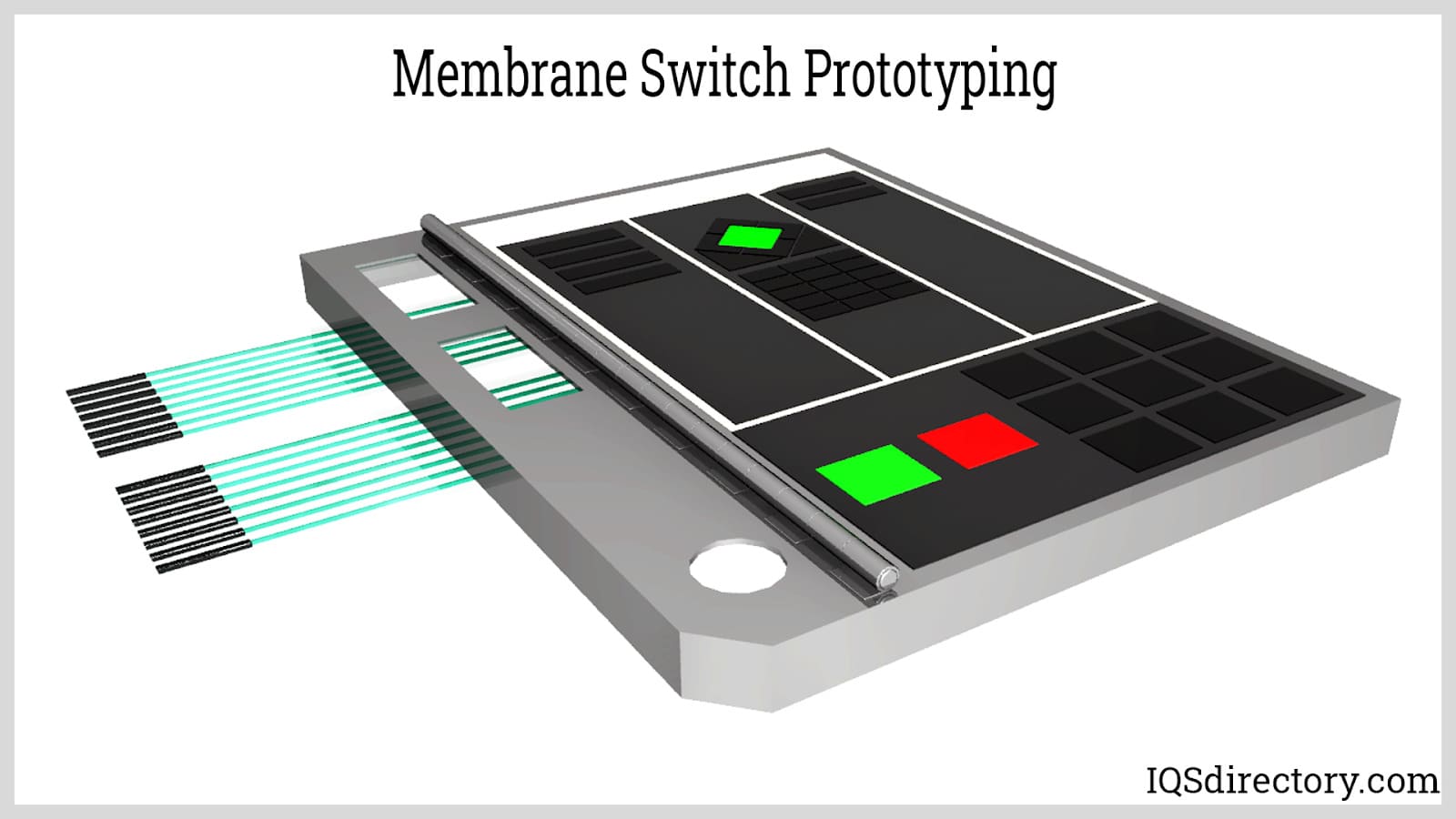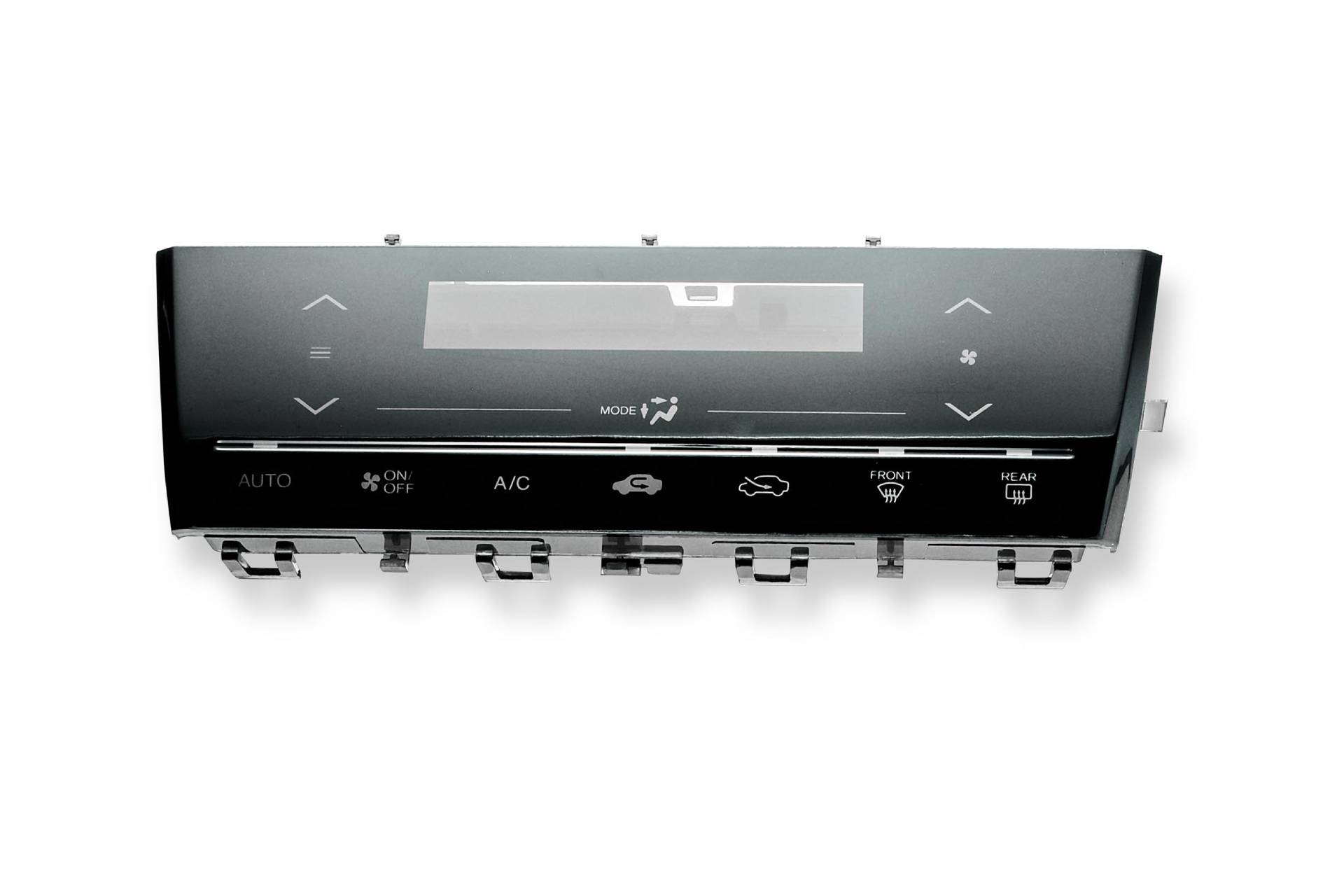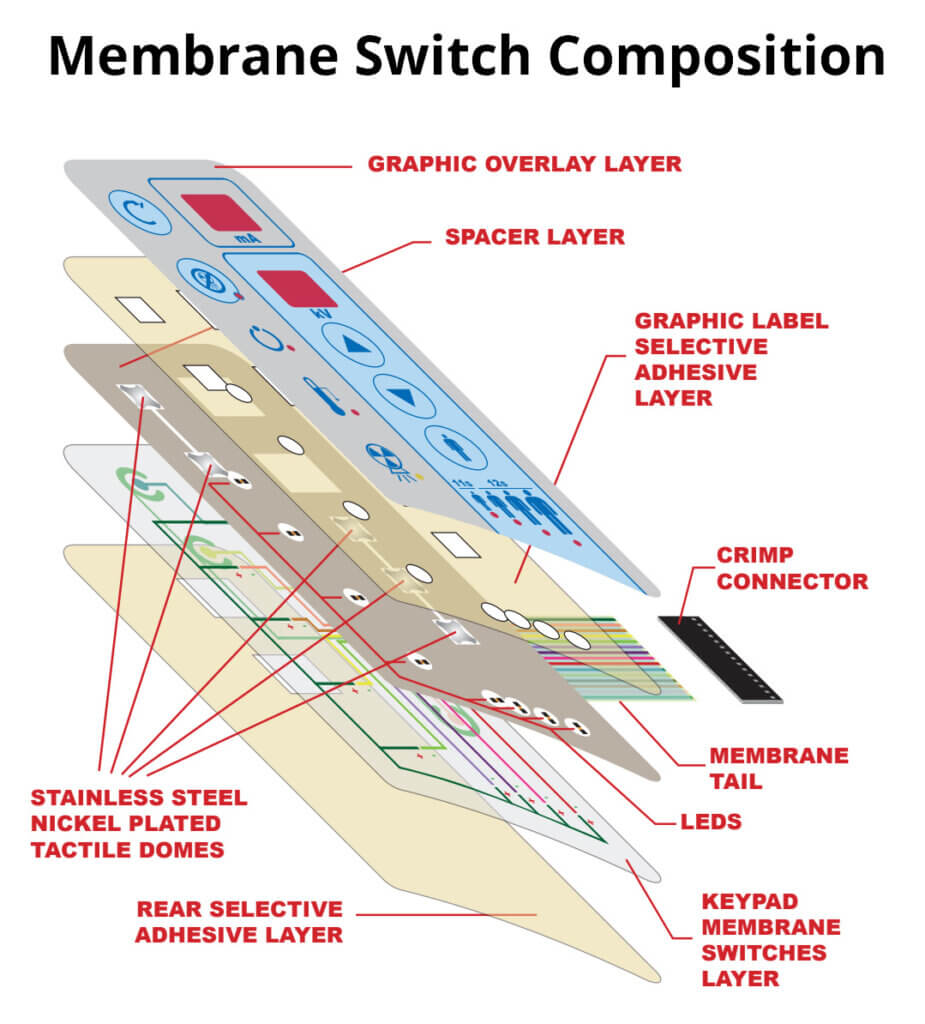Creating intuitive user interfaces with membrane switch
Exploring the Uses of Membrane Change in Numerous Industries
Membrane layer switches are indispensable parts across several markets, including customer electronics and automotive markets. Their lightweight and long lasting nature enables for reliable usage in portable devices. Furthermore, these buttons provide resistance to ecological aspects, boosting their long life. As sectors evolve, the demand for personalized services expands. This increases vital inquiries concerning the future applications and developments of membrane layer switch technology. What brand-new opportunities lie ahead for this functional element?
Membrane Layer Switches Over in Consumer Electronics
Membrane switches play an important role in customer electronics, offering a reliable user interface for various gadgets. These buttons are created to be thin and lightweight, making them optimal for modern gizmos where area goes to a premium. Their versatility allows for assimilation right into varied products, varying from home appliances to handheld tools. The responsive feedback supplied by membrane switches over boosts user communication, making certain a seamless experience.Moreover, membrane buttons are resistant to wetness and dirt, which is vital for maintaining performance in daily settings. They can be tailored with numerous graphics and shades, permitting producers to align with branding needs. Additionally, the cost-effectiveness of membrane layer button modern technology makes it a preferred option for mass-produced electronic devices. As consumer need for streamlined, straightforward devices proceeds to expand, the significance of membrane switches in supplying reputable, efficient interfaces becomes significantly obvious, strengthening their location in the electronic devices sector.
Applications in the Automotive Sector
In the automotive sector, membrane layer buttons are utilized to boost both performance and aesthetic appeal within vehicles. These switches are generally incorporated right into dashboards, control panels, and infomercial systems, supplying a contemporary and streamlined user interface for motorists and travelers. Their design allows for seamless integration with various products, which contributes to the total aesthetic appeal of the vehicle's interior.Furthermore, membrane buttons are valued for their sturdiness and resistance to ecological elements such as dust, moisture, and temperature level changes. This makes them excellent for applications in auto setups, where integrity is essential. In addition, they can be customized with various graphics and designs, enabling producers to develop distinct branding components and user experiences.As auto innovation continues to advance, the need for cutting-edge control options will likely drive further advancements in membrane layer button applications, guaranteeing they stay a crucial component in modern-day automobile style.
The Duty of Membrane Switches in Healthcare
Although frequently neglected, the function of membrane layer buttons in medical care is important for ensuring the effective procedure of clinical devices and tools. These buttons function as interface for a variety of applications, including diagnostic devices, person tracking systems, and surgical tools. Their style enables for easy cleaning and sanitation, which is crucial in maintaining health in medical environments.Membrane buttons are additionally understood for their sturdiness and resistance to use, making them suitable for gadgets that withstand regular usage. Their tactile feedback provides customers with a reputable experience, boosting usability for medical care professionals. Furthermore, membrane layer switches can be customized with various graphics and formats, making certain that they meet details requirements of different medical applications. Overall, the combination of membrane switches in medical care modern technology not only improves functionality but also adds to patient security and operational effectiveness within medical centers.
Aerospace Innovations With Membrane Change Technology


Industrial Automation and Membrane Layer Switch Solutions
Membrane layer button technology is increasingly finding applications in commercial automation, where dependability and performance are paramount. These switches act as essential elements in numerous automated systems, helping with individual interactions in environments that demand toughness and longevity. Their style enables for a smooth integration with control board and tools, guaranteeing convenience of usage for operators.In industrial setups, membrane buttons can stand up to rough conditions, consisting of direct exposure to dirt, wetness, and severe temperature levels. This strength makes them suitable for applications in manufacturing, logistics, and process control. In addition, their customizable features make it possible for companies to develop tailored services that fulfill certain functional needs.The responsive comments given by membrane layer switches over improves individual experience, reducing the chance of errors throughout operation - membrane switch. As markets proceed to progress in the direction of better automation, the role of membrane layer switch modern technology is expected to expand, improving and driving effectiveness process in complex industrial atmospheres

Often Asked Inquiries
What Materials Are Commonly Used in Membrane Layer Switch Over Construction?
The products typically utilized in membrane layer switch construction include polyester, polycarbonate, adhesive layers, printed graphics, and conductive inks. These parts ensure adaptability, responsiveness, and sturdiness, making them ideal for various digital applications in diverse markets.
Exactly How Do Membrane Layer Switches Compare to Standard Buttons in Toughness?
Membrane switches normally provide superior longevity compared to typical buttons, as they are much less susceptible to mechanical wear and tear. Their secured style safeguards against dust and dampness, boosting longevity in numerous applications.
Can Membrane Layer Switches Over Be Custom-made for Particular Applications?
Membrane switches can without a doubt be customized for particular applications. Their layout flexibility enables tailored shapes, functionalities, graphics, and dimensions, making them ideal for diverse environments and boosting individual communication across numerous digital tools and equipment.
What Are the Environmental Considerations for Membrane Switch Over Disposal?
The environmental factors to consider for membrane layer switch disposal include read the article potential hazards from products made use of, recycling possibilities, and adherence to laws. membrane switch. Proper disposal methods are necessary to decrease environmental influence and advertise sustainability within making procedures
Exactly How Do Membrane Layer Changes Effect User Experience in Tools?
Membrane layer switches over greatly boost user experience with responsive responses, toughness, and design adaptability. Their smooth combination right into gadgets fosters intuitive interactions, while their aesthetic allure can elevate item presentation, inevitably adding to individual contentment and engagement. The tactile feedback given by membrane changes enhances individual communication, making sure a smooth experience.Moreover, membrane layer buttons are resistant to moisture and dirt, which is vital for maintaining functionality in everyday Home Page settings. In addition, membrane switches can be customized with various graphics and formats, making certain that they fulfill certain requirements of different medical applications. Membrane layer switches are likewise resistant to dampness and pollutants, guaranteeing longevity and long life in numerous cockpit and cabin applications. Membrane switch modern technology is increasingly locating applications in commercial automation, where reliability and performance are critical. Membrane layer switches over usually offer exceptional toughness contrasted to standard buttons, as they are much less prone to mechanical wear and tear.